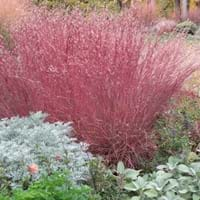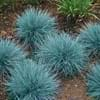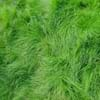Life Span
Annual
Biennial
Origin
North America, United States, Northeastern United States, Mid-Atlantic United States, Southeastern United States, North-Central United States, Central United States, South-Central United States, Southwestern United States, Mexico
Texas
Types
Greener Pastures
Not available
Habitat
Grassland
Forests, meadows, Pastures, Prairies, savannahs, Woodland edges
USDA Hardiness Zone
4-9
8-10
AHS Heat Zone
10 - 3
10-6
Sunset Zone
1a, 1b, 2a, 2b, 3a, 3b, 4, 5, 6, 7, 8, 9, 10, 11, 12, 13, 14, 15, 16, 17, 18, 19, 20, 21, 22, 23, 24
H1, 8, 9, 12, 13, 14, 15, 16, 17, 18, 19, 20, 21, 22, 23, 24
Habit
Clump-Forming
Upright/Erect
Flower Color
Purple
White, Lemon yellow, Light Pink
Flower Color Modifier
Bicolor
Bicolor
Fruit Color
Not Available
Tan
Leaf Color in Spring
Light Green
Green
Leaf Color in Summer
Light Green
Green
Leaf Color in Fall
Red, Purple
Not Available
Leaf Color in Winter
Tan
Light Green
Leaf Shape
Grass like
Alternate
Plant Season
Summer, Fall, Winter
Spring, Summer
Sunlight
Full Sun, Partial Sun
Full Sun, Partial Sun
Type of Soil
Loam, Sand
Loam, Sand
The pH of Soil
Acidic, Neutral, Alkaline
Neutral, Alkaline
Soil Drainage
Well drained
Well drained
Bloom Time
Late Summer, Early Fall
Early Spring, Spring, Late Spring, Early Summer, Late Winter
Tolerances
Drought
Drought
Where to Plant?
Ground
Container, Ground, Pot
How to Plant?
Divison, Seedlings
Seedlings
Plant Maintenance
Medium
Medium
Watering Requirements
Medium
Average Water Needs, Do Not over Water, Keep the Soil well drained, Requires regular watering
In Summer
Lots of watering
Lots of watering
In Spring
Moderate
Moderate
In Winter
Average Water
Average Water
Soil pH
Acidic, Neutral, Alkaline
Neutral, Alkaline
Soil Type
Loam, Sand
Loam, Sand
Soil Drainage Capacity
Well drained
Well drained
Sun Exposure
Full Sun, Partial Sun
Full Sun, Partial Sun
Pruning
Remove damaged leaves, Remove dead branches, Remove dead leaves
Remove damaged leaves, Remove dead branches, Remove dead leaves
Fertilizers
All-Purpose Liquid Fertilizer
All-Purpose Liquid Fertilizer
Pests and Diseases
Red blotch
Pests and diseases free, Red blotch
Plant Tolerance
Drought
Drought
Flower Petal Number
Single
Single
Foliage Texture
Fine
Medium
Foliage Sheen
Matte
Matte
Attracts
Butterflies
Bugs, Butterflies, Insects
Allergy
Not Available
Abdominal pain, Anxiety, Inflammation, Low blood pressure
Aesthetic Uses
Showy Purposes
Beautification, Decorating walls, Hanging Basket, Showy Purposes, Used as an interior landscaping species, Used for decorating walls, fences, gates, hedges, etc.
Beauty Benefits
Not Available
Skin irritation, Skin Problems
Environmental Uses
Air purification
Air purification
Medicinal Uses
Not Available
Eczema, Menstrual Cramps, Menstrual Disorders
Part of Plant Used
Leaves, Root
Flowers, Root, Seeds, Stem
Other Uses
Showy Purposes
Beneficial species for attracting pollinators, deer resistant, Edible seed
Used As Indoor Plant
No
Yes
Used As Outdoor Plant
Yes
Yes
Garden Design
Cutflower, Dried Flower/Everlasting, Groundcover, Mixed Border, Rock Garden / Wall
Mixed Border, Rock Garden, Wall, Wildflower
Botanical Name
ERAGROSTIS spectabilis
OENOTHERA mexicana
Common Name
Purple Lovegrass
pinkladies, pink evening primrose, showy evening primrose, Mexican primrose, and amapola.
In Hindi
eragrostis spectabilis
Mexican primrose
In German
eragrostis spectabilis
Rosa Nachtkerze
In French
eragrostis spectabilis
Mexican primrose
In Spanish
Eragrostis spectabilis
Primrose mexicana
In Greek
eragrostis spectabilis
Μεξικού Primrose
In Portuguese
Eragrostis spectabilis
Mexican Primrose
In Polish
Eragrostis okazałe
Mexican Primrose
In Latin
Eragrostis spectabilis
Mexicanus Primrose
Phylum
Magnoliophyta
Tracheophyta
Class
Liliopsida
Magnoliopsida
Family
Poaceae
Onagraceae
Genus
Eragrostis
Oenothera
Clade
Angiosperms, Commelinids, Monocots
Angiosperms, Eudicots, Rosids
Tribe
Eragrostideae
Onagreae
Subfamily
Chloridoideae
Onagroideae
Number of Species
Not Available
Importance of Purple Lovegrass and Mexican primrose
Want to have the most appropriate plant for your garden? You might want to know the importance of Purple Lovegrass and Mexican primrose. Basically, these two plants vary in many aspects. Compare Purple Lovegrass and Mexican primrose as they differ in many characteristics such as their life, care, benefits, facts, etc. Every gardener must at least have the slightest clue about the plants he wants to plant in his garden. Compare their benefits, which differ in many ways like facts and uses. The medicinal use of Purple Lovegrass is Not Available whereas of Mexican primrose is Eczema, Menstrual Cramps and Menstrual Disorders. Purple Lovegrass has beauty benefits as follows: Not Available while Mexican primrose has beauty benefits as follows: Not Available.
Compare Facts of Purple Lovegrass vs Mexican primrose
How to choose the best garden plant for your garden depending upon its facts? Here garden plant comparison will help you to solve this query. Compare the facts of Purple Lovegrass vs Mexican primrose and know which one to choose. As garden plants have benefits and other uses, allergy is also a major drawback of plants for some people. Allergic reactions of Purple Lovegrass are Not Available whereas of Mexican primrose have Abdominal pain, Anxiety, Inflammation and Low blood pressure respectively. Having a fruit bearing plant in your garden can be a plus point of your garden. Purple Lovegrass has no showy fruits and Mexican primrose has no showy fruits. Also Purple Lovegrass is not flowering and Mexican primrose is flowering. You can compare Purple Lovegrass and Mexican primrose facts and facts of other plants too.





